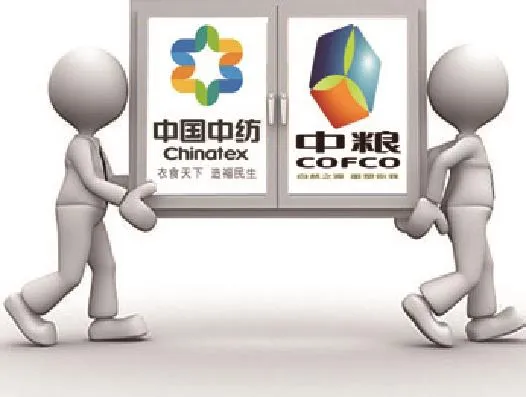Innovation Nation
Innovation Nation
China is growing into a world-class idea generator By Corrie Dosh
China is the maker of the world’s goods, however, the idea of “Made in China”denoting innovative, efficient products might seem like fantasy.
The same entrepreneurial spirit that has driven the country’s meteoric rise in the global marketplace is now driving a wave of innovation supported by the deep pockets of the Central Government. Some 2,500 “innovation centers”have popped up in cities across China, and that number is set to double in the next five years, according to Internet research firm iiMedia.
Meeting the consensus annual GDP growth forecast over the coming decade (5.5-6.5 percent) will require China to generate 2-3 percentage points of annual GDP growth through innovation, according to a study released last fall by McKinsey Global Institute. That transition—from “innovation sponge” to global innovation leader—is possible for China, said authors of the study, though far from inevitable.
China is already becoming known for its advances in customer- and manufacturing-oriented innovation. A viral video circulating on the Internet recently depicts a futuristic Chinese city with traffic humming along efficiently thanks to a sleek, elevated bus that is cheaper, cleaner and easier to build than any subway. A model of the Transit Elevated Bus debuted at this year’s Beijing International High-Tech Expo, where it was just one of a number of groundbreaking ideas on display.
Every year the country spends more than $200 billion on research (second only to the United States), produces 30,000 PhDs in science and engineering, and leads the world in patent applications, said McKinsey.
“Chinese companies are performing well in some types of innovation, by filling consumer needs with better products and services and wielding the power of China’s manufacturing ecosystem to make innovations in production processes,” stated the study’s authors. “China has yet to take the lead in more challenging forms of innovation, such as scientific discovery and engineering, but Chinese companies are using a distinctly Chinese way to nimbly accelerate experimentation and learning on a large scale.”
Over the coming decade, the world will feel a “China effect” on innovation, predicted the study, as more companies look to China as a location for low-cost and rapid innovation.
“The overall China effect could be disruptive, bringing large-scale yet nimble innovation to serve unmet needs in emerging markets and produce new varieties of goods and services for advanced economies. Around the world, consumers could benefit from better goods at lower prices,” said the authors.

A flexible and transparent keyboard developed by Shenzhen-based hi-tech company Royole Corp.
Challenges ahead
As China transitions to a slower-growing, more consumption-driven economy, it faces a huge challenge adjusting from the 9.4-percent average annual GDP growth rate that it enjoyed for 30 years, stated the McKinsey study. The two forces that helped drive growth, a constant supply of cheap labor and massive investments in housing, infrastructure and industrial capacity, are fading.
“Without labor force expansion and investment to propel growth, China must rely more heavily on innovation that can improve productivity,” states McKinsey.
In the second quarter of this year, China maintained its growth pace of 6.7 percent thanks to increased government spending and the availability of credit. Critics said regulators are still relying too much on big state-owned enterprises with overcapacity problems and not enough on innovation, despite repeated calls by Premier Li Keqiang and others to fosterinnovation, entrepreneurship, and implement structural reform to shift the economy to hi-tech industry and services. Government spending in June rose nearly 20 percent year on year, China’s Ministry of Finance said on July 15, an increase of more than 2 percentage points above the rise in May.
The Chinese Government recognizes the role innovation will play in maintaining the country’s growth. Areas like south China’s Guangdong, which rely heavily on traditional manufacturing, are spending millions on research and development (R&D) to maintain their GDP growth. Guangdong authorities this year pledged to increase private and public investment in R&D from 2.5 percent of GDP to 2.8 percent in five years.
There is still room for further spending, though, if China is to catch up with global leaders. In 2013, South Korea invested 4.1 percent of GDP back into R&D, Japan invested 3.4 percent, and Sweden spent 3.3 percent.
Chinese startups, however, are creating a buzz. In particular, China’s share of the world’s hi-tech manufacturing has skyrocketed—from 8 percent in 2003 to 24 percent in 2012. R&D in the sector is growing at 18 percent a year, according to a report by the U.S. National Science Board (NSB), which warns that Chinese hi-tech output could outpace that of the United States “in the near future.” From 2001 to 2011, the U.S. portion of global R&D fell from 37 to 30 percent. Meanwhile, China’s share jumped from 2.2 percent in 2000 to 14.5 percent in 2011, said NSB Chairman Dan E. Arvizu in a press conference.
Venture capitalists pumped a record $15.5 billion into Chinese startups last year, although the figure is still a fraction of the U.S. venture capital pool of nearly $50 billion a year.
In China’s Next Strategic Advantage: From Imitation to Innovation by George Yip and Bruce McKern, the authors say most Chinese companies still lag behind in new ideas, but emerging tech firms are changing their industries forever. Chinese consumers are quick to adopt new trends and are digital sophisticates. Unlike people in established markets, they are quite forgiving of mistakes, which lets firms experiment, fail and learn quickly, say Yip and McKern. The huge diversity of the continental-scale country forces firms to adapt nimbly in what Yip and McKern call “the world’s biggest Petri dish for breeding world-class competitors.”
“The Chinese have always been very entrepreneurial people,” said Nobel Prize-winning economist Edmund Phelps in an interview with Xinhua News Agency. “Innovation is alive and is developing in China. That will go on, and nothing will happen to derail it.”
China is “regaining its historical position as a global innovation power,” stated the authors of the China Innovation Survey in 2013.
“The nation that brought the world such inventions as the water-powered mill, paper money and explosives is increasingly viewed as a center of 21st-century innovation excellence. That said, corporate and government leaders know that Chinese companies must move up the value chain for China to achieve ‘developed nation’ status, and that the way to do this is by focusing on new technologies, product offerings, and services within the country. Local companies continue to spend massively on R&D, the government sector is actively supporting their efforts, and multinational companies are making large investments in China as a laboratory and workshop for global innovation,”wrote the survey authors.

A lower-limb rehabilitation robot developed by Jiangsu Industrial Technology Research Institute
The author is a contributing writer to Beijing Review, living in New York City
Copyedited by Chris Surtees
Comments to yushujun@bjreview.comSOEs Receive A Makeover
Reforms to establish healthier and more competitive state enterprises By Wang Jun
Chinese grain and oil giants Chinatex Corp. and COFCO Corp. have merged following an announcement by the State-Owned Assets Supervision and Administration Commission of the State Council (SASAC) on July 15. Both companies are centrally administered state-owned enterprises (SOEs) under the supervision of the SASAC.
The main reason behind the merger is the fact that both companies are engaged in the grain and oil industry. The union therefore accelerates COFCO’s growth as a major international grain trader and ensures China’s grain security, Li Jin, chief researcher with the China Enterprise Institute, told business news website Yicai.com.
Chinatex focuses on two core businesses: textiles and grain and oil. According to a news release by COFCO, after the reorganization, its oil-processing capacity in China will reach 24 million tons, raising its overall market share to 18 percent and making it a domestic leader. Currently COFCO and Chinatex are the largest and third largest grain and oil producers in China, respectively.
The alliance between the two serves as an example for China’s efforts to revamp its anemic and moribund economic structure. “It is expected that in the next three years, the reorganization of SOEs will become more active, and various forms of restructuring will accelerate,” said Li.
Roadmap clarified
This is regarded as a crucial move to kick off a new round of reforms for central SOEs.
The State Council on July 26 issued a guideline on the restructuring and reorganization of central SOEs, which says that by 2020, SOEs are to have more accurate strategic position-ing, more reasonable general structures and remarkably improved efficiency in capital allocation. The guideline also aims to set up a group of innovative and competitive SOEs to become world-leading multinational corporations.
Various platforms will be established to strengthen research and development in SOEs, promote innovation cooperation among industries, enhance Internet Plus growth and support financial innovation, says the guideline. The Internet Plus initiative is the Chinese Government’s attempt to fuse traditional industries with information technology in order to improve methods of production and other aspects of their operations.
Corporate restructuring will be strengthened in fields such as equipment manufacturing, construction engineering, electric power, steel and iron, nonferrous metals, shipping, construction materials, tourism and aviation services. These reforms aim to improve efficiency in the use of resources, reduce price competition and effectively reduce overcapacity, especially in the steel and coal industries. Despite these measures, more efforts are needed to reorganize enterprises that have been suffering losses for at least three years and are unlikely to show a profit in the next two years.
The guideline also asks related industries to stop operating non-key businesses and managing assets that lack market competitiveness. It requires state-owned capital to support key industries related to national security and economic growth as well as central SOEs undertaking major national programs.
The structure and flow of state-owned capital in central SOEs should be improved through restructuring those enterprises and exploring more effective business models, says the document.

Slimming central SOEs
Li said that the guideline highlights two main structural problems regarding central SOEs. First of all, the businesses are too diversified, and the core businesses are uncompetitive. Second, there are too many management levels, and the organizations are overstaffed.
“A tree can’t have a strong trunk if it has too many branches, so we must cut its excess parts,” he said.
According to SASAC figures, SOEs were involved in 39 major industries at the end of 2013, said Qi Yudong, Dean of the School of Business and Management at the Capital University of Economics and Business.
“SOEs must focus on major industries,”said Qi, adding that central SOEs with too many management levels and covering too many industries must be reorganized, while those suffering heavy losses must quit the market.
A press release by the SASAC states that it will work on slimming down central SOEs by requiring them to reduce management levels, streamline business chains, improve management procedures and increase management efficiency.
The commission also urges central SOEs to accelerate the reorganization of internal resources, to sell non-core or uncompetitive businesses, and to promote the use of stateowned capital for key industries.
The SASAC also plans to reduce, within five years, 15 percent of the current production capacity of central SOEs in the steel and coal industries. In 2016 alone, those enterprises must cut 7.19 million tons of production capacity for iron and steel, while coal producers must reduce theirs by 31.82 million tons. The commission will also set up a company to serve as a platform for coal-related assets in central SOEs, with the aim of further reducing overcapacity in that sector.
Performance upturn
Nonetheless, according to SASAC figures, central SOEs are recovering. In the second quarter of 2016, central SOEs made total profits of 370.22 billion yuan ($55.84 billion). The average monthly profit was 123.41 billion yuan ($18.61 billion), up by 38.99 billion yuan ($5.88 billion) over the first quarter. In June, profits generated by central SOEs totaled 141.9 billion yuan ($21.42 billion), the highest in the first half of 2016.
During the first half, 38 central SOEs saw their profits grow by more than 10 percent, and 16 central SOEs saw their profits grow by more than 30 percent. Among the 18 central enterprises suffering losses in the first quarter, six rebounded in the second quarter. Meanwhile, the other 12 enterprises managed to mitigate their losses by a total of 7.06 billion yuan ($1.06 billion) compared with the first quarter.
Affected by a decline in the prices of bulk commodities such as oil, coal, steel, nonferrous metals and power, sales revenues in central SOEs decreased by 1.8 percent to 10.8 trillion yuan ($1.63 trillion) in the first half, but the decline improved month by month.
At the end of June, the average debt-asset ratio of central SOEs stood at 66.2 percent, 0.5 percentage points lower than the figure at the end of 2015, with 56 central SOEs reducing their ratios over the first two quarters.
In the first half of the year, net cash flow into central SOEs from sales totaled 711.04 billion yuan ($107.25 billion), up by 6.4 percent, or 43.06 billion yuan ($6.49 billion), from the same period last year.
Copyedited by Bryan Michael Galvan
Comments to wangjun@bjreview.com

